|
I returned to Madagascar this year with two projects in mind - a solar hot water system and the repair of PV systems in remote clinics. My time was limited to six weeks, but in the end, that proved to be sufficient. I had already decided to wind down the operation in Madagascar and this trip was, in a sense, a farewell tour. Last year I had promised my good friend Zoe, that I would install a solar hot water system in Akany Tafita, the children's center in Anosibe, a very poor quartier of Tana, where I had stayed previously. They had added a second floor to the building that included classrooms upstairs, along with two studio apartments. This expansion was designed to increase the center's revenue stream from social functions on the ground floor and rentals from the apartments above. Although I had just gained some experience installing a solar hot water system in Burma, I was a little nervous about working on a sloped metal roof, as my left knee had recently given out, and could not be relied on. Imagine my delight when I found out that the purchase price of the system include free installation! In the end, this was the best solution as there was some heavy lifting and complex welding involved, and the days when I could do that on a slippery metal roof are behind me now. With myself in the role of supervisor, the installation was completed in three days, as the team from Majinco Solar was quite competent and professional. What a joy to have a hot shower on a cool evening in Tana! This hot water system will be of great benefit to the children's center – it will make the apartments more attractive to tenants and the kids can have hot showers, something they would never have at home. Extra hot water will be used for laundry and dish-washing. Improved health, increased self esteem and a sense of well-being are all benefits we expect to flow from this new access to solar hot water. Last year, during the solar PV trainings I conducted in several villages, I learned that many remote clinics had solar systems that were no longer functioning. They had been installed by NGOs from France and Finland about 7 or 8 years ago and now the batteries were dead. I worked with Ny Tanintsika, a local NGO, to select the eleven clinics to visit. Some we could repair on the spot, some I had to return to Tana to buy new batteries etc. Interestingly, the quality of the original equipment and installation was usually high, but sometimes the original design was flawed, and the systems never performed properly or for very long. I hired a truck from Ny Tanintsika and with driver, guide and translator, we headed off into the wilds of Madagascar. And I mean the wilds! We had to cross rivers by ferry, replace the wooden road-bed on bridges and pass through country well-known for banditry. It was indeed, one of the great Solar Roots hard-traveling adventure trips. We had our share of adventures too – we crossed a rickety bridge without difficulty on the outward journey, but imagine our surprise on the return leg to find that the wooden beams had all been stolen and that there was no way to cross. Luckily, after a couple of hours, a big Mercedes truck arrived with just enough beams and tree trunks aboard to get us both across. (I guess these truckers have to be prepared for any eventuality!). I have difficulty accepting that certain individuals would be so selfish as to steal these beams and leave several communities, comprising of thousands of people, isolated from the rest of the country, from emergency health care and indeed from daily supplies trucked in over that bridge. One interesting thing was the reception we got from the staff at the various clinics. Usually, they were delighted that we had restored electric light to the clinic and they expressed their thanks profusely, sometimes with personal gifts for me, once including a chicken! But sometimes things turned sour when it became apparent that my primary mission was to ensure that the lights in the clinic functioned, even if that meant disconnecting the TV/video and cell phone charging station that the doctor and midwife had going on as little side businesses. But I was firm in my resolve – my funds and my mission were dedicated to the benefit of the patients and improving the quality of health care. I came across other incidences of malfeasance, like the case where no patients could stay overnight in one clinic because the previous doctor had stolen all but two of the mattresses. One repair job, in the village of Ankaramena, gave me particular satisfaction. The doctor was an unassuming man who was himself disabled, as a result of a physical assault. He had never had electricity in his own house before and I felt privileged to be able to provide that small service for him. Unfortunately, we didn't get much time to spend with the clinic staff, to get to know them better. Usually, we had to do the repair and get back on the road, so we could arrive at the next site before night fell. Traveling at night in remote, bandit country in Madagascar is not recommended. As I mentioned in Burmese Times #6, we regularly had to pass the as-yet incomplete monument to the Catholic priest who was shot dead in his car, only a month earlier. The economy and rule of law have deteriorated so much since the coup d'etat four years ago, that the police and the bandits work hand-in-hand. Sometimes, police weapons are actually used in the commission of robberies. All-in-all, we visited eleven clinics, made repairs to nine of them, replaced twelve batteries, four charge controllers, one PV panel and two inverters. This work was made possible by a very generous donation from the Fort Fund of San Francisco, which covered most of the equipment cost and vehicle hire. Solar Roots donations paid for the remainder. So, my time in Madagscar is at an end. I have learned many things about the country and about myself. But I feel it's time to move on. Next year I will concentrate on Myanmar, and setting up a permanent workshop and training center there.
0 Comments
I was invited to give a Rocket Stove workshop at Nu Po Refugee camp a few weeks ago and gladly accepted. It would delay my arrival in Myanmar by two weeks, but the prospect seemed well worth it. In the end I decided to give a solar PV training too and in order to transport all my material there I had to hire a pick up truck and driver for the day. One hundred dollars, but well spent, as I no longer had any restriction on the amount of gear I could bring. In order to get there, we had to take the famous “Highway of Death” between Mae Sot and Umphang, which was so vividly described in my Fourth Epistle from the Border, see above. This crazy piece of road engineering has 1,200 bends in 160kms! If that were not enough to merit the above-mentioned moniker, during the 60’s to the 80’s there were many deaths from snipers belonging to the Thai Communist Party and local opium growers, two groups who sternly resented the interest the Thai government was taking in their respective affairs. However, those days are long gone and now tourism and the business generated by looking after Burmese refugees are the only games in town.  How I looked after my last Highway trip! How I looked after my last Highway trip! My host was a genial Dutchman called Ton, who teaches at an economic development school in the camp and who has dedicated the last 15 years to this work in various camps up and down the border. Hats off to you, Ton! He is a movie buff too and within a couple of days, the Nu Po Roxie was up and running. Nu Po is very close to the Myanmar border and is set in beautiful mountain surroundings. Although only established five or six years ago, it has over 15,000 residents and they make up a diverse community indeed. Since it is just opposite Karen state, most of the residents are Karen, but there are also Kachin, Shan, Burman and many moslems. The moslems are the merchants and the teahouse operators. Curiously, many camp residents did not need to flee for their lives, they came for the free educational opportunities or to try to be resettled in third countries. However, many others have harrowing tales to tell. One of my students had to flee Kachin state when his brother became a ‘person of interest’ because of his political activity. Another, older gentleman , a Burman, clearly had been an intellectual or a functionary of some kind and had to flee five years ago, leaving all behind him. These two were my most enth 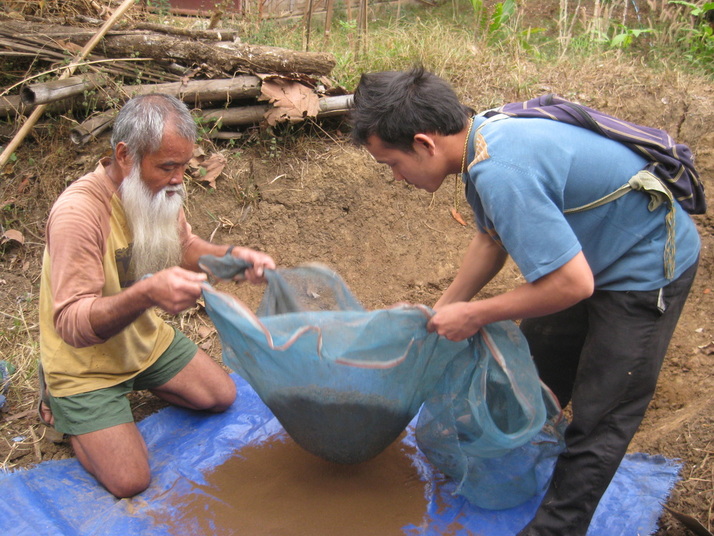 Sifting crushed clay to get the fine powder Sifting crushed clay to get the fine powder On planning the stove training I decided to make insulative clay bricks for the combustion chambers and use square cooking oil tins as the containers. Luckily, there already existed demonstration videos on Youtube and I was able to project them for the participants to study. They say that a picture is worth a thousand words. I wonder what the calculation is for a moving picture? Although I had studied the videos carefully myself, I had never actually built any of these stoves or indeed fired any bricks. In the videos the clay came out of nice neat paper bags, clearly purchased from the neighborhood pottery supply store. I knew that wasn’t going to happen in Nu Po, but I trusted that at least one of the resourceful Karen would have some clay working experience. I was not disappointed. We dug the clay from an existing hole on the school grounds, pounded it into smaller pieces then sifted that through some fine mesh to obtain the clay powder we would need.  The wet bricks will lie in the sun for two days before being put in the kiln The wet bricks will lie in the sun for two days before being put in the kiln For insulative material to mix with the clay we had three available choices, fine hardwood sawdust, rice husks and powdered charcoal. We used all three and experimented with proportions, as the videos were a little vague in that area. We made the brick molds from plywood and lined them with plastic sheets to make removal of the wet bricks easier, (or indeed, even possible!). Our kiln was a 55-gallon oil drum with the lid cut off and our heat source was rice husks. I had chosen two different bricks shapes, one we called the Africa brick and one we called the Lao brick, after the origin of the videos we were watching. So, after making enough bricks for three Africa stoves and two Lao stoves we loaded up the kiln and held an official lighting ceremony. I was anxious that the husks would keep going out, but once well lit, they burned surprisingly consistently, until they hit the mass of clay bricks. We had packed the bricks too densely and there were not enough husks around them to sustain a burn. But after 48 hours, each brick got at least one side well cooked. The students repacked and another 48 hour firing was started. Unfortunately, I had to leave before the second firing was finished and I am waiting to hear news about the results.  Our makeshift kiln was a regular puffin' Billy! Our makeshift kiln was a regular puffin' Billy! While the kiln was in action we were not idle, no siree Bob! I explained the function and benefits of Pot Skirts and the participants brought their own pots for custom fittings. The older gentleman, mentioned above, took his creation home at lunchtime and came racing back in the afternoon with a pot twice as large, saying that his wife loved it and that she wanted another one for her gas stove. The advantage she saw was that it directed the heat away from her face. For the next four days I gave an introductory training in Solar PV. After much classwork and occasional sleepiness, we would emerge into the bright sunlight to demonstrate and test what we had learned with my show-and-tell bag of solar cells, fans and lights. The basic electric concepts of voltage, current, resistance, energy and power are difficult to master for most westerners and doubly so for those who are meeting them for the first time. However, without a decent grasp of these terms, no-one can design or troubleshoot a PV system.  Mr Cowboy checks to see that everything is flowing as it should Mr Cowboy checks to see that everything is flowing as it should We also visited three existing PV systems in the camp, which was extremely instructive, as all three suffered from one maladie or another. The batteries in the large system at the camp administrative office had been allowed to boil off most their acid and thus were ruined. The man charged with looking after the system, affectionately nicknamed Mr Cowboy, was not there when it was installed and had never received any maintenance training. What had been a good powerful system, now could only power two lights for 30 minutes before shutting down. Next we visited a private home where there was a panel and two batteries, but no charge controller. Normally, this is a no-no, but having two batteries ensured that there were never enough hours in the day to overcharge them. I recommended that the two batteries be joined together in parallel to equally charge them both. An amusing incident, (for everyone except the victim), happened at this house. Upstairs we met the family, including a chubby infant, and after reviewing the solar system, we descended to the ground floor to partake of some instant coffee. After a few minutes one participant started patting his head with a questioning look on his face as he surveyed the ceiling for the source of the droplets raining down on him. This merely illustrates the ancient Karen proverb that goes “People who live in bamboo houses must always be ready for the occasional golden shower”. The last site visit was a shop where the panel was facing almost due North, and of course, contributing very little to the health and welfare of the batteries. We sorted that out and soon were on our way home, having learned much and help a little bit too.  Family selling cabbages at the market Family selling cabbages at the market At the risk of boring the non-battery afficiandos in the audience, I would like to explain about how many of the camp residents get their electricity. There are several small hydro turbines and motor generators that put out occasionally wildly erratic voltages. These are used to charge old car batteries that are then connected to Burmese made-inverters to deliver a loose approximation of 220V for TVs and lights. The short life and poor performance of these batteries are due to several perfect-storm circumstances that not even the most valiant electro-chemical device could withstand. Here’s the sad tale: the batteries are only pressed into domestic service after they will no longer start cars, if they get water, it will be muddy stream water or rainwater, (rarely the mandatory distilled water), they will be discharged to within an inch of their lives on a daily basis and recharged by people who have only the vaguest idea about battery maintenance and no financial incentive to learn more. Oh, and did I mention that car batteries will inevitably have a short and unhappy life if used in deep cycle applications? I had hopes of being able to improve the situation, but when one man asked me why he should take his battery back to the recharger before every last watthour had been squeezed out of it, I couldn’t come up with a reason that made financial sense to him. Why take your pail to the dairy with some milk still in it? They’ll only charge you for your own milk! My entreaties about long term investments fell on deaf ears, as well they might for people who are grateful to still be alive and out of prison. ‘Nuff said about batteries.  We tried to hurry along the sun drying with a little turbo charge from the parabolic cooker! We tried to hurry along the sun drying with a little turbo charge from the parabolic cooker! As the bricks gently cooked, we also installed a new solar system on the library building. I had intended to just purchase a small 12V system, as much for a teaching aid as anything else. But my purchase choices were limited and we ended up with a slightly larger 24V system, that will actually supply much of the electricity needed, much of the year. After 3 days of lectures and demonstrations, the students were ready for some hands-on work. Either I’m getting much better at this, or these participants were really bright, (a combination of the two I’m guessing), but the install went very smoothly with only discreet oversight and the occasional suggestion from myself.  The new 185 Watt panel on the Library building The new 185 Watt panel on the Library building With only two days left, the bricks were still not baked, so I started a new rocket stove design featuring a sheet metal combustion chamber. This was done to illustrate the use of another material and the example built by our Kachin participant was an object of beauty. This galvanized metal will only last a month or two, but I did bring some thicker stainless steel that they can use for the real thing later on. 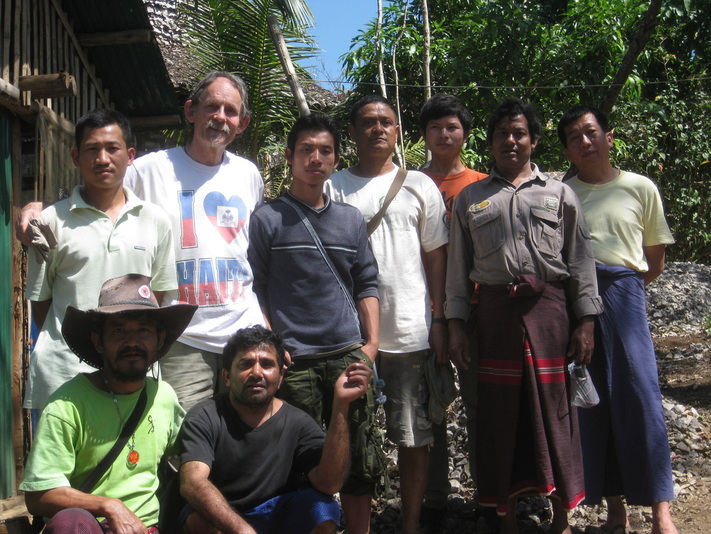 Serious looking graduates from the solar class Serious looking graduates from the solar class So ended a very successful and satisfying two weeks. All the participants were extremely grateful for the knowledge and skills imparted, including the megabytes of pdf documents on every subject from gasifiers to greenhouses. Solar Roots left behind a nascent collection of tools for stove building including an angle grinder and cordless drill and I hope some positive feelings about technology transfer and East-West cooperation. Another trip overseas is finished and it’s time for reflection and planning for next year. But first another excerpt from my Malagasy Journal. I arrived in Madagascar this year with hopes and plans and enough funds to execute both. However, from Day One, it was to prove my most difficult trip, from a psychological and emotional point of view. I was depressed and despondent much of the time and being attacked by a modern day cut-purse, whose razor sliced right through my bag, notebook, t-shirt, and trousers shortly after I arrived, set me off on negative attitudinal decline that I only fully pulled out of at the end of the trip. But, as always, there were delightful moments and some real achievements, a few of which I will recount here. Ambohimahamasina Revisited One of the two large projects I had pre-arranged with Sam, of Ny Tanintsika, a local NGO, was to install a 420 Watt PV system to power the Soamiray women’s basketry co-operative in Ambohimahamasina. A new two-storey building had just been completed with funds from Prosperer, a private sector/state funder that supports rural enterprises. They also funded the solar system, though not quite to the extend of the 1,000 Watts I had originally asked for. If I had been in charge of the purchasing, we could have bought the larger system for the same amount of money, but that’s another story! I had the metal racking for the panels welded up in Fianarantsoa and made the usual rounds of the covered market in Tsaralalanana, Tana, to get the best prices for tools, and cable etc. I had asked for 3 helpers to assist with the heavy lifting and to train up as knowledgeable maintenance men. But in the end, it turned out to be a jobs-program, where two were on-the-ball enough to grasp the fundamentals of PV and electricity, but three were restricted to heavy lifting under strict supervision. Luckily, the winter weather In Madagascar is a delight to work in – a bit like summer in the Bay Area – cool, even foggy, mornings and evenings, with a pleasantly hot afternoon. The orientation and tilt angle for the panels was a bit of a challenge as the roof pointed north-west and it already had a 30 degree slope. But as all those who attended my later training sessions will , I hope, know, the panels must face due North in Madagascar and in Ambohimahamasina, should be tilted at about 22 degrees. I left a space on the racking for two more panels, should the funds ever become available. In short, the installation went very smoothly and we were even able to provide power for the local electricians who did the interior wiring of the lights and plugs. Three of the upstairs rooms of the Vannerie (basket weaving), building are dormitory rooms where tourists who come for trekking can stay. The co-op ladies manage this little business and it is another source of income for them. All in all, there are now 26 lights and 15 plugs, all powered by solar energy. The system was heralded by the whole community as a great success. I later came across a cheap source of what seemed like reliable panels in Tana, so purchasing two, I returned to Ambohimahamasina to complete the installation. PV Trainings This year I held three PV training sessions – one in Tana for professionals or people wanting to break into PV, one in Solila and one in Ambalavao. The last two were attended by people who were already responsible for solar system attached to schools and clinics. The Tana one I gave in French as usual, but for the other two I was able to teach in English and have it simultaneously translated into Malagasy. This was a big improvement – many thanks to my translator Mamy Ives! Another innovation this year was the formalization of the curriculum for the Introduction to PV course. It took me 10 days of combing through all my reference books to come up with a 10-page document. But now it’s done and each new training can be tailored to the participants using this curriculum. Mamy Ives is translating it into Malagasy and I’m sending it off for translation into Karen and Burmese. Sambavy Another fun project this year was a quick visit to the village of Sambavy, near Fianarantsoa. This is the location of a large tea plantation and is tucked away in beautiful hills about 25 kms out of town. This was another small pilot project where we gave LED lights and small batteries to 12 householders and a solar panel to one responsible person, who would operate the charging station as a small enterprise. I had brought the ultra-efficient lights from Burma and bought the rest of the equipment locally. Unfortunately, the high cost of the batteries and solar panel means that the charging fees and replacement costs will be much higher than in Burma. The batteries are brought back to the charging station twice a week and the latest report is that the pilot program is a great success. So another trip to L’ile Rouge was concluded and I was happy to head back to California, via Thailand. Eight months on the road is a long time and I plan to manage my schedule next year with more attention to rest and relaxation. We’ll see!  I spent an afternoon at a battery repair shop, right there on the street in Fianarantsoa. The batteries are cut open, the ruined plates removed and replacements installed. The same acid is poured back in and you are out the door for $30! If they last another year, it's economically viable, but it's a dangerous, toxic business. 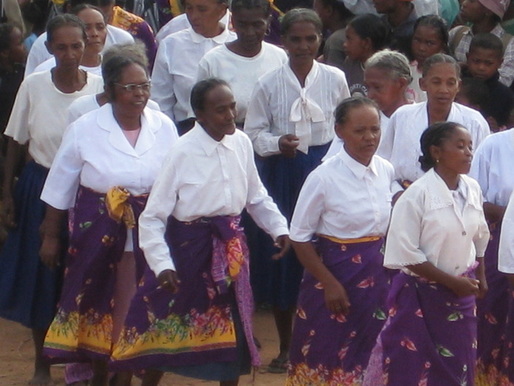 Matching lambas during a dance performance Matching lambas during a dance performance Malagasy Style The Malagasy people are actually very stylish dressers in my opinion. Perhaps not in a style recognized by the international community, (a bit like their government), but in a style at once personal and idiosyncratic. The love of bright colors is evident in the sheets, blankets and lambas that people swathe themselves and their babies in. The lamba is a multi-purpose sheet of cloth that is used as a sarong, a baby carrier or head wrap. It has deep significance in Malagasy culture and was traditionally woven from local thread. Now most women wear a mass produced lamba of printed fabric. One of the fashion idiosyncrasies is that men often wear garments in delicate hues and to see a man sporting a shirt in flaming pink or very feminine lime green is not so unusual. The further one is from the city and foreign influence the more individual stylistic expression reigns. One amazing phenomenon is the access Malagasy people have to very stylish and well tailored clothes second-hand from Europe. Many times I see people in $120 North Face or Polar Tec jackets that they picked up for $5 in the market. These clothes are donated to the equivalent of the Salvation Army in Europe and sold by the kilo to entrepreneurs who sell them at the local market. To my eye, perhaps the most stylish expression is to be found in the variety of head gear available. Many straw hats are sold, but not Panamas; they are more like the pork pie hats made famous by Lester Young and Dizzy Gillespie, with a beautiful line of pink woven through them. Of course they are worn at a jaunty angle, sometimes pulled down to shade the eyes. Women often wear straw hats with a bowl crown, a large brim with a tattered edge and the resulting dappled sunlight on the face is quite, quite alluring. The French influence is evident in the proliferation of berets and caps worn by city men. In fact, this year after visiting Laos, Vietnam and Madagascar, all ex-French colonies, I conclude that the main cultural legacy left by these gaullic invaders comprises of berets, baguettes, and petanque! Stovin’ I had intended to concentrate on improved cook stoves this year, but the best laid plans on mice and men and well-meaning vahaza, (foreigners), gang aft aglay. However, I did make some inroads into learning about what stoves are available on the local market and I actually started a working relationship with two stove producers, M. Mamy and M. Roland Berma. M.Mamy and his extended family are really aluminum smelters to trade, producing spoons,cocottes (pots), and jewellery, all made from recycled aluminum window frames doors. By a great stroke of luck, I was led to their door and discovered that they had made the covers/pot supports for a series of stoves ordered by ADES, a Swiss NGO working principally with solar cookers. Straight away, I commissioned 10 new stoves to be built, that I named the ‘Apro-Acme’, since the design was actually spawned at the Aprovecho Research Center. I didn’t get much opportunity to test them out, but just before leaving I did discover that there has been design drift leading to the covers/pot supports being shorter than the original specification which diminishes the draft through the stove. Next year I will bring them a new cast iron model that will get them back on track to the original specs. I did have M.Mamy make two pots with integral pot skirts, that is, another another pot without a bottom that surrounds and is attached to the first one. This skirt captures the heat that is normally lost at the sides of the pot and forces it to scrape against the sides of the pot, thereby increasing the heat transfer into the pot and its contents. Increasing heat transfer into the pot is the Holy Grail of Stovers and it’s said that a pot skirt can reduce fuel consumption by 20-30%. We’ll see, I’m taking one back to the Aprovecho Research Center laboratory for testing. Malagasy Taxis Most city taxis in Madagascar are old Renault 4s, sometimes up to 50 years old. There are a few Deux Chevaux, and a few more modern Renaults (from the 70’s), but the field is utterly dominated by the farmer’s friend, the Renault 4. It has numerous advantages including a really spongey suspension that survives well the many cobbled streets in Tana and other towns, it is extremely simple to repair, with all parts being easily available or easily fabricated locally, it’s economical on gas as there really isn’t much metal in it and you can still pick up a completely refurbished one for $3 to 4,000. At first I was puzzled by the constant smell of petroleum inside the taxis, until I realized that the one-liter plastic bottle at my feet was in fact always full of gas! This is because the high cost of fuel forces taxi drivers to buy only one liter at a time. However, in the countryside, la brousse, the chariot of choice is the venerable Peugeot 404 pick up. These vehicles are unbelievable in their ruggedness and longevity. They have metal dashboards and so many welded repairs and replacement parts that they look like my uncle’s axe, that had 6 new handles and 3 new heads, but was still the best axe I ever had. Like the human body, the Malgasy Peugeot 404 seems to change its entire cell structure every 7 years! The only way to go from city to city is to take a taxi brousse which will usually be a 15 seater mini van, Toyoya or Mazda. This year I broke a couple of my personal bests in terms of cramming human bodies into vehicles: 25 into a 15-seater mini van and if you can believe it, 25 into a Peugeot 404 pick up, which had much baggage piled up on the metal cage + canvas “roof”, and had two bicycles on top for good measure. Needless to say, we broke the transmission on that last mentioned voyage. I once saw a decal stuck on the side of a taxi brousse that, instead of saying “No Fear”, actually said “No Far”! A wee Scottish voice in my head said, “you’re no kiddin’ pal!” My record for shortest journey before breakdown was 500meters. Lastly, in some towns there are no taxis and one has to take a pousse-pousse, a rickshaw. I rapidly found out that there is no bodily position that can assuage the psychological discomfort that accompanies being pulled along by another human being. Arms akimbo, legs crossed or even arm slung casually over baggage – none of it works. It’s impossible to feel a l’aise while someone else sweats and struggles to get you from one place to another. Soatana While I was cooling my heels in Fianarantsoa, waiting for a PV project to be funded, I took a side trip with two French friends to the nearby village of Soatanana. Beautifully located next to a steep rock massif, this village is famous for being the center of an unusual Malagasy Christian cult. Founded in the 1890s by a Malagasy man who was seriously ill, then cured by divine intervention, the cult now has thousands of adherents and is to be found in all parts of the country. Defining features of this faith are that the members are always completely dressed in white, (to symbolize purity), their main form of worship is singing, they wash the feet of travelers and they do not pratice “second burial”, (which is common among most other groups). They do however, practice evangelism, which I was less keen on. Never-the-less, they treated us with great respect and welcomed us into their midst. We attended a Sunday mass with several hundred believers and enjoyed greatly their renditions of old hymns, in a distinctive Malagasy style. Mahazony and Miarnanarivo Although the funding for the PV system on the new Maison de Vannerie, (basket weaving), in Ambohihamasina never did come through, Samantha at Feedback Madagascar did tell me about three villages with clinic solar systems that could use some help. The first clinic was in Mahazony and served a population of around 11,000. M.Hasina and his wife, the residents medics, put me up me in their house while I diagnosed the problems with the PV system, installed 7 years ago by Electriciens Sans Frontieres. The PV panels still worked, but the batteries were totaled and unbelievably, someone had wrecked the charge controller by brutally removing several of the key electronic components. Luckily, I had an exact replacement charge controller, but it was stored back in Tana, a two-day, several taxi brousse journey away! Since the batteries were only available in Tana anyway, I decided to make the trip. Joy was unbounded when I had completed the installation and the 10-room clinic plus the medics house were ablaze with light for the first time in four years. I also brought back a battery for the system in the little rooms made available to family members of patients, (more on that later). This trip I brought my newly purchased mountain bike which allowed me to visit the next village, Miarnanarivo, which has no taxi brousse service. There, the problem was, of course, a set of totaled batteries, but also some strangely low voltage readings on the solar panels. Upon further investigation I found that the panels had been incorrectly wired from the get-go and could never have kept the batteries charged under any circumstances. I rewired the panels, put in the new battery, (which the clinic guard from Mahazony had carried on the back of his bike for 2 hours), and the system fired up like a wee champ. The system for the relatives of the Mahazony patients also suffered low voltage disease, so I rewired that panel too and they had electric light, probably for the first time in their lives. I was suddenly the most popular guy in town. A run for mayor of the commune was bandied about for a while, but I told them that I thought I really should learn their language before running for political office!
The Yoghurt King and the Disc Jockey The event that has dominated my entire stay here in Madagascar is la crise politique. The present regime, headed by a baby-faced ex-radio disc jockey, took power illegally, just over a year ago. The ex-president, a yoghurt factory-owning multi-millionaire is now in comfortable exile in South Africa. The ex-Pres, although being legitimately elected, generally approved of by the populace, and having presided over strong economic growth and significant environmental protection, had difficulty distinguishing between state assets and his own. He also was taking Madagascar out of the sphere of French influence and into the arms of the anglophone world. Most Malagasy people believe that France helped organize the coup that brought our disc-spinning friend to power, with the assistance of a dissident army faction. The result has been an unmitigated disaster for the country and the already long-suffering people. Madagascar has been isolated internationally. The US won’t buy its maquiladora clothes, the tourists have fled in droves and the present regime is selling off everything it can at bargain basement prices. Crime has exploded and the feeling of insecurity among the population is palpable. This state of affairs has cast a pall over my entire stay here and I can only hope that it is resolved soon to alleviate the suffering of these peaceful, hard-working people. The Solar Cooker Fiasco Before leaving the US I was asked to help get some new solar cookers out of Customs in Madagascar and to demonstrate them to interested parties. Sounds easy enough? Little did I know that I would be required to haunt the halls of the Customs Dept everyday for five weeks, have a rubber stamp made up in order to “customize” a document and having triumphantly liberated the cookers from the maw of the bureaucrats find out that the dashed things didn’t even work properly! I tested the cookers several times, but could only reach an oil temperature of 108 degrees C, whereas John, the inventor regularly reached over 200 degrees C in his native Hawaii. Even my little home-brewed unit, the Acme Windshield Reflector Solar Cooker, out performed the stainless steel giant. John is stumped by the poor performance, but I think that the tubes sent to me were defective and that the next shipment will be good. However, they will have to find someone else to stalk the Custom halls! Ambohimahamasina I found Feedback Madagascar, a Scottish NGO, online and contacted Samantha Cameron, the regional director in Fianarantsoa, a town south of Tana, to offer my services. Through her, I visited the village of Ambohimahamsina to check out a recently installed solar system that wasn’t working properly. I also took a tube solar cooker and a water sterilizing unit, hoping they would be really useful there. After all the hassle of getting these cookers out of Customs, you can imagine my state of mind when I discovered the tube had been completely smashed in transit from China. The water sterilizer was a big hit though, and my own little Acme Windshield Reflector cooker generated some interest too. I soon found out why the PV system was performing so poorly. In the Northern Hemisphere, we orient our panels towards the South, and in the Southern Hemisphere, the opposite holds true. Well, someone had managed to flaunt this cardinal rule of orientation, with disasterous consequences for the battery. After only 6 months of operation, the $400 battery was ruined. I decided to completely revamp and expand the system and offered to pay for half of it, about $1,000. This particular system is on a remote rural clinic, which serves over 16,000 people and has a permanent doctor, with whom I stayed. Dr Jacqui, a gusty and gutsy Malagasy lady was always ready with a smile, a joke or a jibe about wimpy vahaza, whichever the situation called for. I had help from two local men, M. Donne and M. Jaques. The first, with some knowledge of electricity, the second, ever-so-sweet, but a walking hazard on a job-site! We installed the PV system in 3 easy days, then spent the next 7 completely rewiring all the lights in ten rooms of the clinic. I was extremely satisfied with the results, given that the village is on the eastern side of the Hauts Plateaux, where the weather was foggy in the morning and cloudy by 3pm. Everyone was delighted with the new system, since now night-time births are well illuminated, attendants can turn on a light for an emergency and clinic staff get reliable electricity in their modest homes. I really only got one day off and with a couple of other volunteers took a hike round a local mountain. Unfortunately, it was foggy all day, but our guide told us where everything was and we just had to imagine the rest! A highlight was a lunch of duck with a local family and a visit to small raffia weaving cooperative. This region is on the edge of the eastern mountain range and is being developed by the local people, with help from Feedback, as a center of hiking and eco-tourism. I was very impressed by the initiative and follow-through of these people. The land is fertile, the rainfall copious and the people industrious, (if somewhat given to over consumption of the local cane spirit). In my next epistle, I will describe two weeks I spent in a village in a region to the west of Tana, en pleine brousse, in what the Malagasy call the “Far West”. Quite, quite different from Ambohimahamasina.
I am sure you are all aware of the recent disaster in Haiti and mourn the loss of so many people. As far as I can tell, all the friends I made in Haiti are safe and well, even if homeless and sometimes hungry. However, the international solar community also suffered a great loss when Walt Ratterman perished in the collapse of the Montana Hotel. Walt was a solar hero, traveling to such remote locations as Tibet, Burma and Rwanda, installing systems and spreading the solar gospel. I respectfully dedicate this report to his memory. I went to Haiti in November with my friends, Antoine, a native Haitian, and his partner, Denise. They operate a grass-roots non-profit organization called the Bellot-Idovia Foundation, named after Antoine’s grandparents. We stayed a few days with relatives of Antoine in Port-au-Prince before heading north to the small island of La Tortue, (La Torti in Creole). In Port-au-Prince we visited the National Museum, which is a mausoleum for several of the heroes of the struggle for Haitian independence. We also walked past the Presidential palace, which later completely collapsed during the earthquake. The 45-minute plane ride to Port de Paix showed me clearly the extent of deforestation and soil erosion across the country. Deep gullies started in the bald mountains and fanned out to become wide swathes on the coastal plains – conduits for eroded top soil. At Port de Paix we boarded a 30ft sail boat to La Torti. It was a poignant journey for Antoine, as he was going back to his home town. The high-point for me was the a capella renditions of Haitian hymns and folk songs as we glided over the deep blue Caribbean water. We stayed in the port town of LaValle with Antoine’s sister, Therese, who after living many years in the US, has moved back to the island to help the local people and to re-establish her father’s abandoned farm. As soon as we arrived, Antoine threw himself into the task of meeting with local organizations, finding out what help the islanders needed and generally, being available to anyone who wanted to talk. During the three weeks we spent on La Torti we visited four schools, all private, and we were surprised to find out that 50% of the island’s children did not go to school, mainly because the $60 per year school fees were beyond the means of their parents. We resolved there and then that Bellot-Idovia would sponsor some children’s school fees in the future. Now that I’m giving you some facts and figures, let me give you some more…….La Torti is 36kms long by 9kms wide, it has a population of 63,000 souls, there is not one policeman on the island and violent crime is almost unknown. La Torti used to be completely covered in lush forest and be self-sufficent in food production. Now, it’s mostly bare and imports much of its food. The islanders have many problems including poverty, unemployment, severe soil erosion, restricted access to clean drinking water, lack of educational opportunities and no access to credit, but they are left to fend entirely for themselves. There are no outside NGOs operating on the island and for all intents and purposes, it can be considered a “government-free zone”. We met with several local organizations that are attempting to address the aforementioned problems. One of the main concerns is the “Ravine”, which runs from the bowl-shaped valley behind the town and in times of heavy rain, concentrates the downpour to produce surges of floodwater that can sweep away people and houses. I recently became interested in mitigating soil erosion and took a few hikes into the upper watershed to see what could be done. As a newly-minted “expert” in soil erosion, I believe that small scale floodwater diversion in the upper watershed can prevent the accumulation of destructive volumes of water reaching LaValle. Next year I hope to do a pilot project demonstrating the diversion techniques. Another issue brought up by the local groups again concerned water, but this time, potable water. The area around LaValle is blessed with several sources of fresh water, the most important being La Sous, an hour-long hike from the town itself. It would be wonderful to bring this very pure water down to LaValle, but because the pipe would have to traverse many separate properties and follow the Ravine, but not be swept away by the flood, I couldn’t see a way to do this. For the moment, people will have to continue to use the wells in town, which, since they are within 200 meters of the shore, have a somewhat salty taste. In visiting several other wells and springs, we were disappointed to see so much laundry being done right next to the source, so much chlorine being used with the bottles discarded right there and cows being watered from the same source as humans. Antoine hopes in the future to pipe water down from the well at Tijonasse to serve the community of Nan Grisgris. (I include this last sentence just so I can show you the cool place-names on the island! Both people and places have great names in Haiti). The most concrete achievement of our visit was the installation of a small solar electric system on the clinic in LaVallee. Through me, Bellot-Idovia purchased the two panels and two batteries in Miami and had them shipped to Port de Paix. Since the previous panels on the clinic were stolen, we were determined that it wouldn’t happen again. I went by sailboat to Port de Paix and had a metal frame welded up that allows the panels to be padlocked in place. The installation of the batteries, control equipment and hookup to the existing AC wiring was an easy matter and gave me an opportunity to do a hands-on PV class, following from the two I had previously given. I did the trainings in French, which was a stretch, but it has rekindled in me the desire to finally dominate the language, as we say en francais! The clinic has an examination room, a maternity room, a waiting room and storeroom. All now have a light and functioning plug outlet. We hiked all over the dry, deforested western end of the island, close to La Vallee. The land rises steeply from the coast up to a plateau, where due the volcanic origins of the rocks, the soil can be quite fertile. However, water is scarce and agriculture is often on a subsistence level. The unusual (for those of us from places with strong property rights!), form of land tenure in Haiti has led to very small subsistence farms, much sub-divided between off-spring and has mitigated against stewardship of the soil and natural resources. The government owns most of the land and many people just squat on it, but without any incentive to improve it. Thus we come to one of the most serious crises facing Haiti and La Torti in particular, namely deforestation. The once verdant island, is now severely deforested and becoming more so every day. As the population increases, new fields are opened up on steeper and steeper slopes. A typical scenario involves clearing the land of all vegetation, converting the large trees into charcoal and planting a cash crop such as peanuts. The charcoal, exported to mainland Haiti, provides a cash injection at the beginning, but it is still not enough to ward off hunger during the planting season in November and December. Unfortunately, La Torti faces one crisis after another. Having escaped the worst ravages of the recent earthquake, La Torti is now hosting many people who have fled Port-au-Prince in search of a safe location where the basics of life might be available. Therese is reportedly feeding 100 people per day from her own kitchen. Thus, as I sit here in a small town in Tanzania, listening from a distance to local people singing hymns, they remind me of that first sailboat trip to La Torti, and my heart goes out to the poor and displaced people of Haiti. As the weeks go by and other news stories replace Haiti in the headlines I appeal to you to sustain your interest and continue giving to organizations that are doing such great work there. I recommend giving to Partners In Health, co-founded by Paul Farmer and to the Bellot-Idovia Foundation, both of which can be found on the web.
|
Archives
March 2017
Categories
All
|



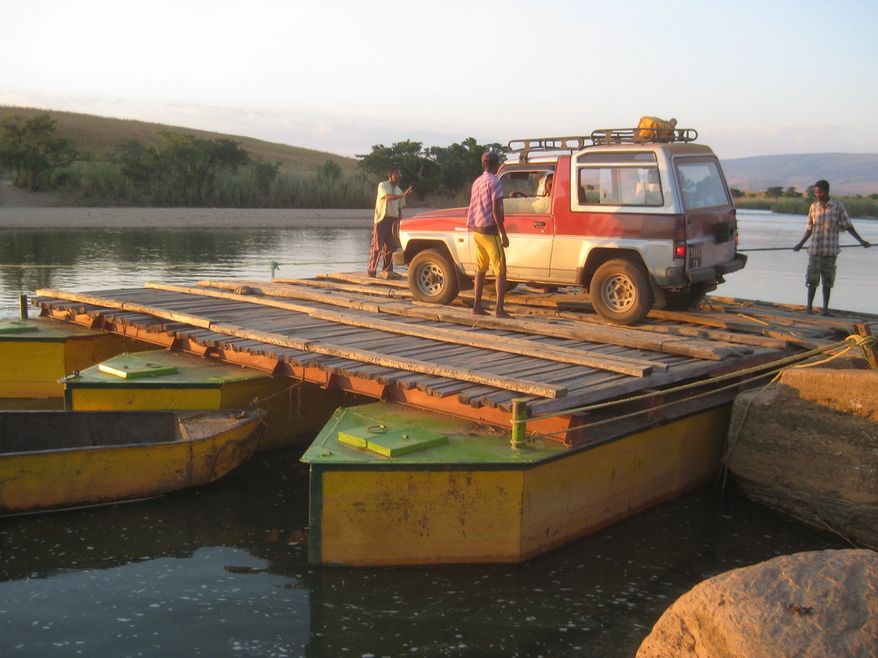


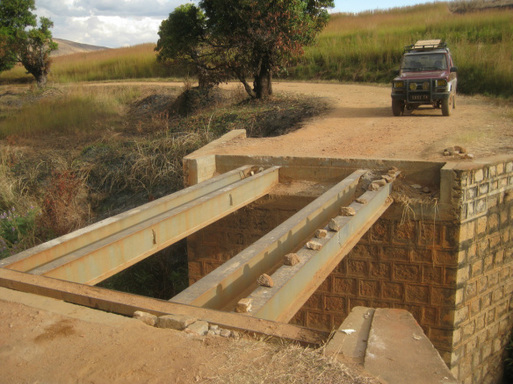



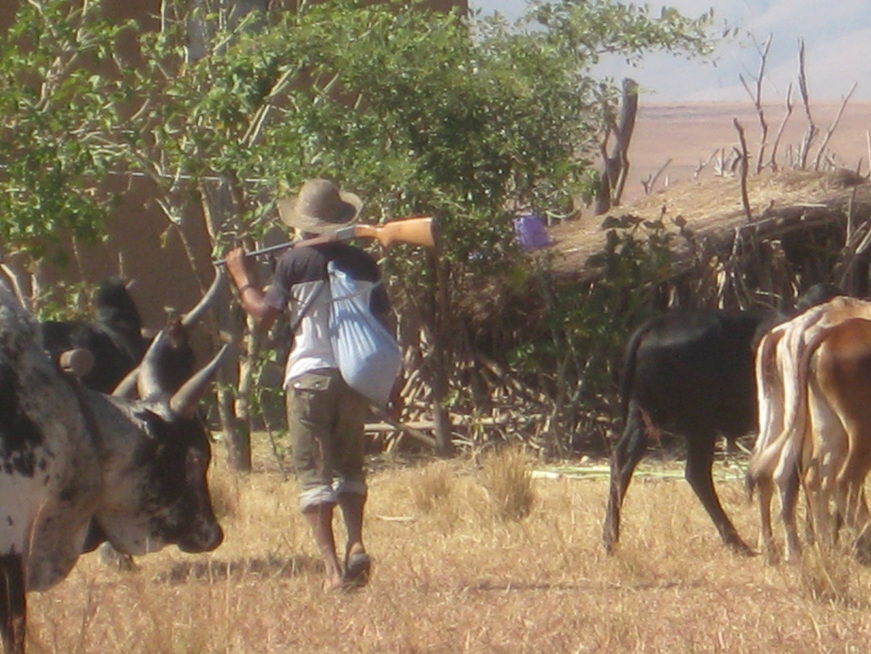


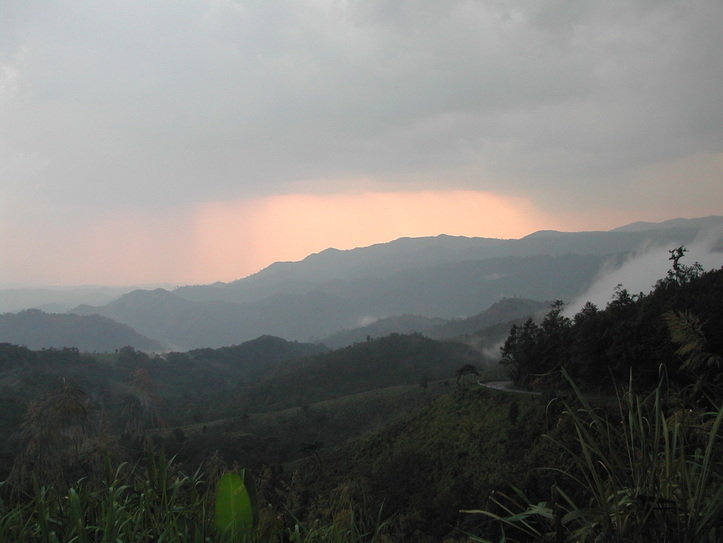
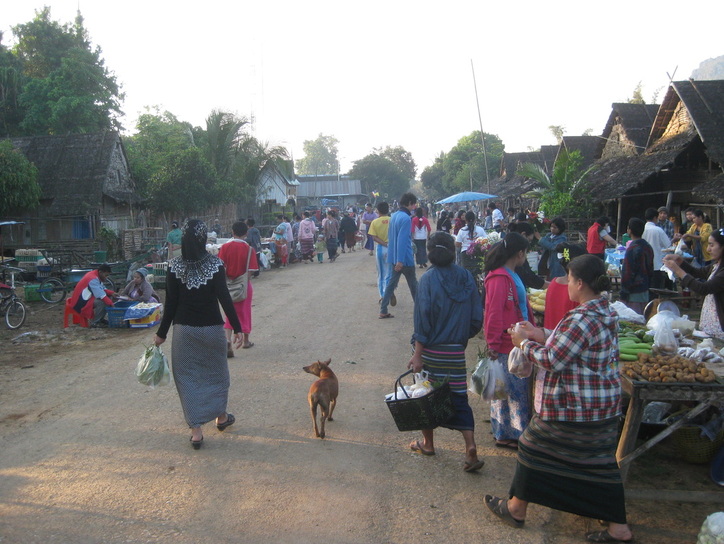
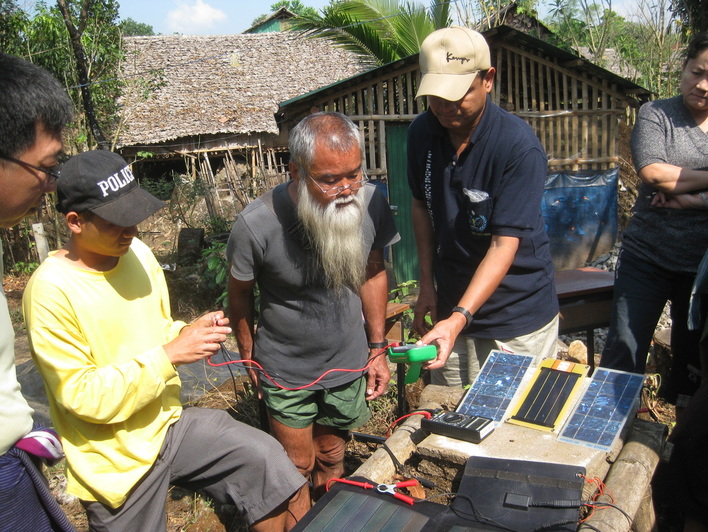



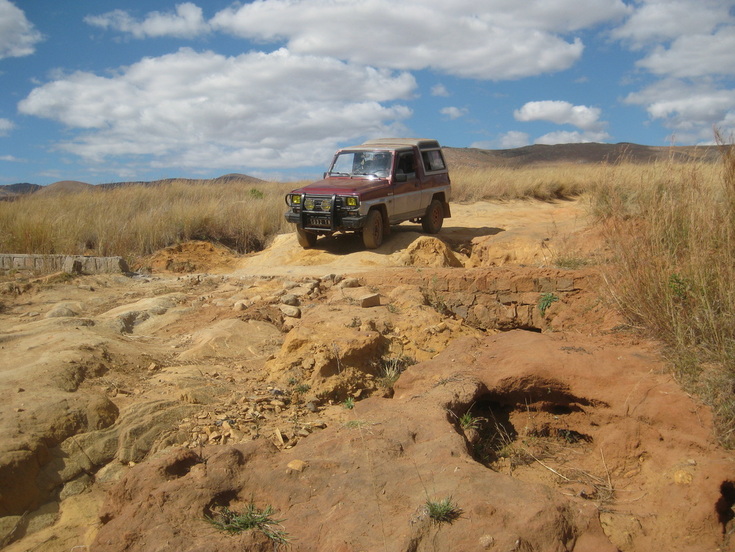

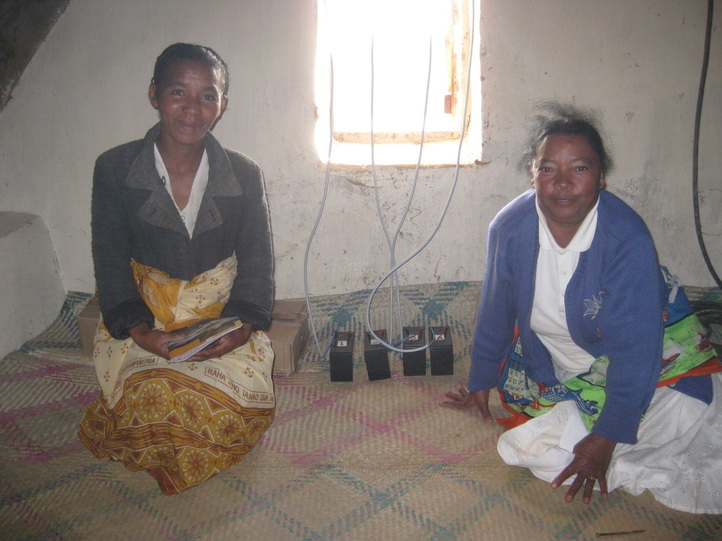

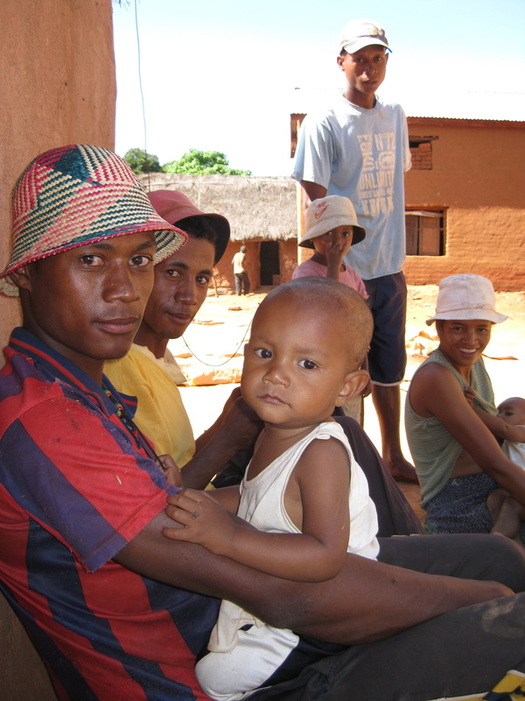
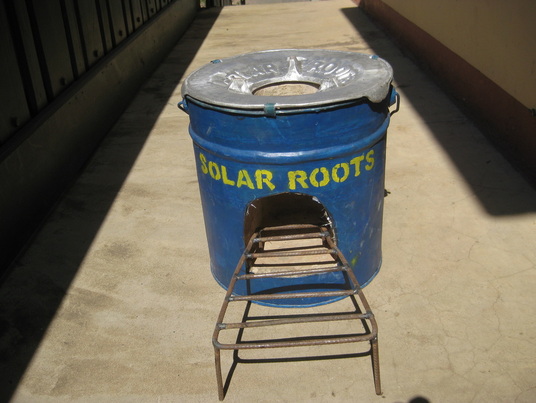





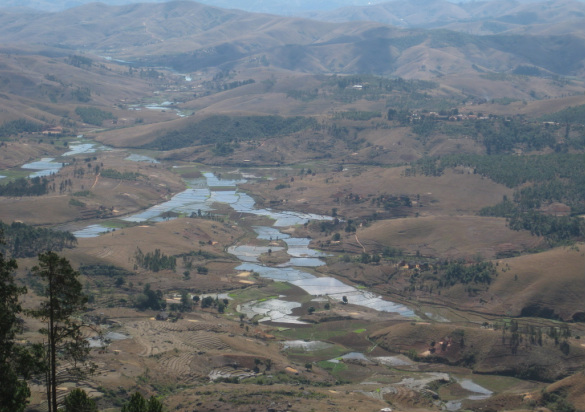
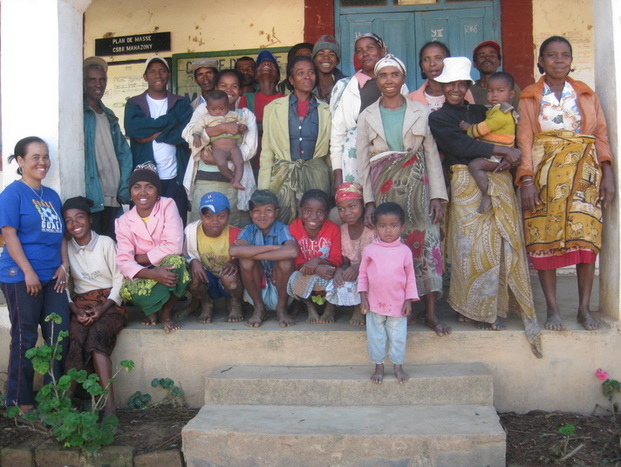
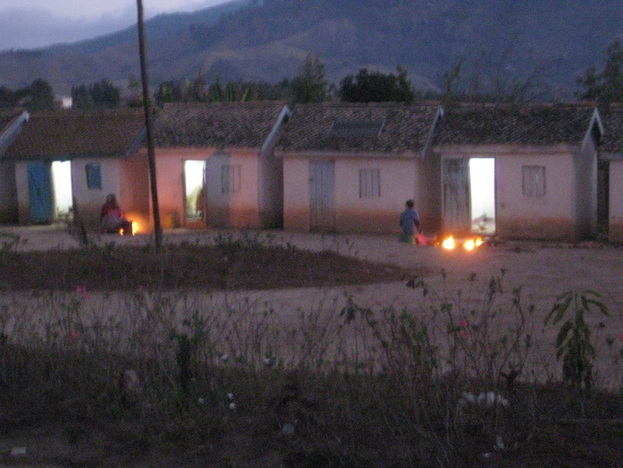
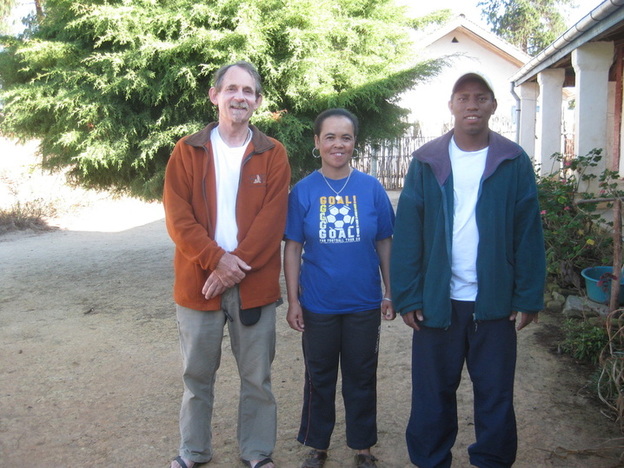
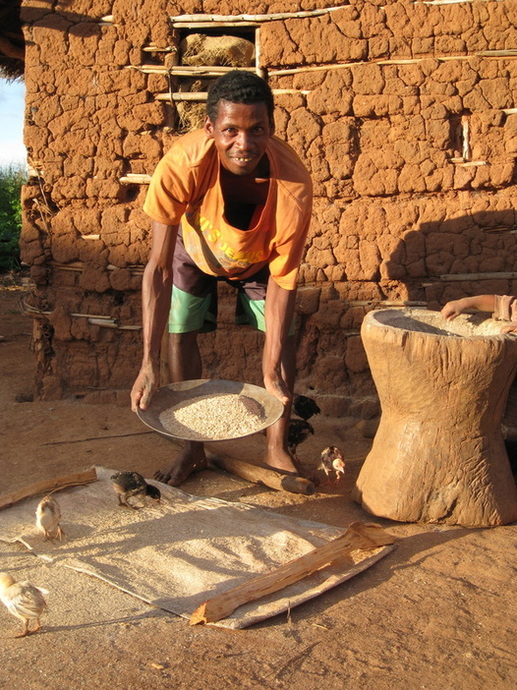

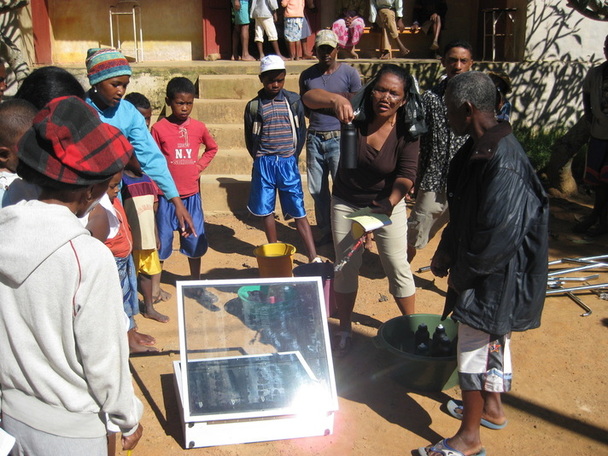
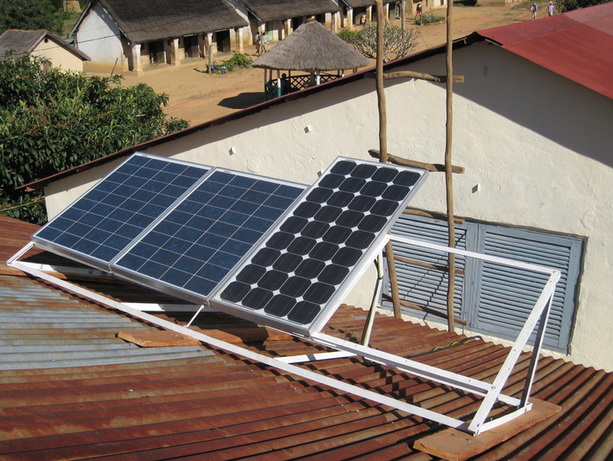






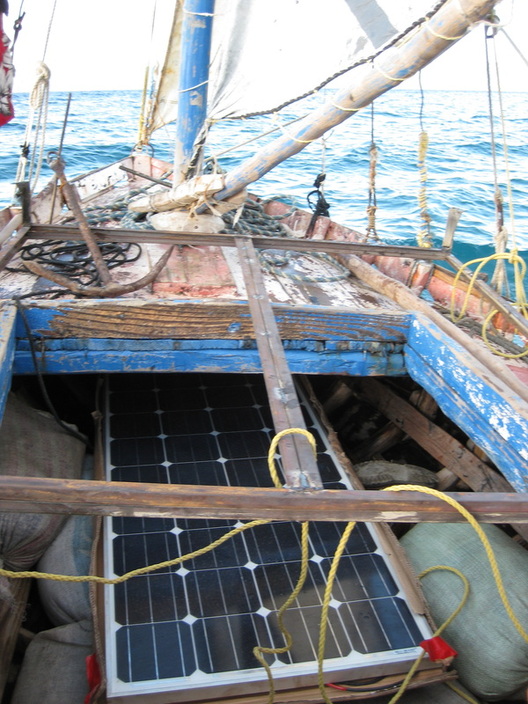



 RSS Feed
RSS Feed